
How to Use XIAO ESP32C3: Examples, Pinouts, and Specs
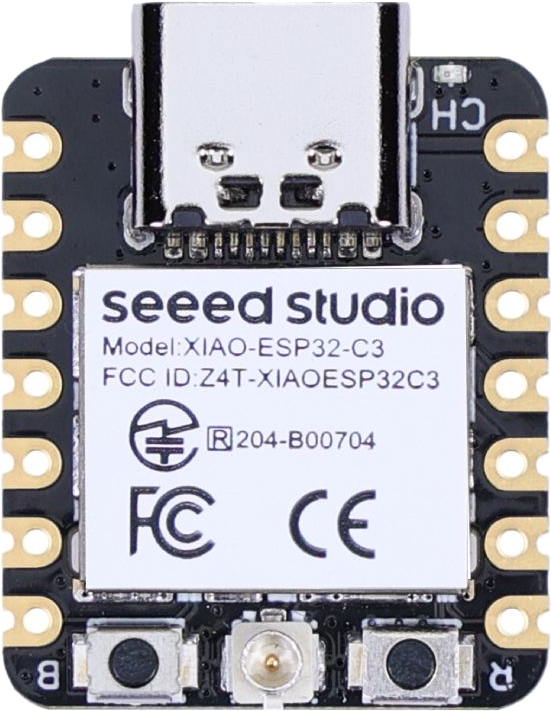
 Design with XIAO ESP32C3 in Cirkit Designer
Design with XIAO ESP32C3 in Cirkit DesignerIntroduction
The XIAO ESP32C3 is a compact and powerful microcontroller board developed by Seeed Studio. It is based on the ESP32-C3 chip, which features integrated Wi-Fi and Bluetooth Low Energy (BLE) capabilities. This board is designed for IoT (Internet of Things) applications, offering a small form factor, low power consumption, and robust wireless connectivity. Its versatility makes it suitable for a wide range of projects, including smart home devices, wearable electronics, and wireless sensor networks.
Explore Projects Built with XIAO ESP32C3
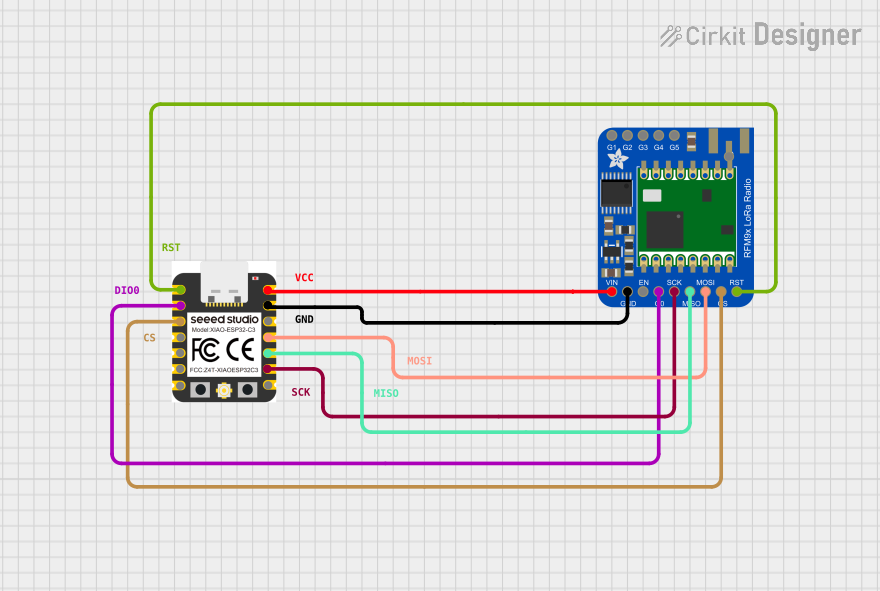
 Open Project in Cirkit Designer
Open Project in Cirkit Designer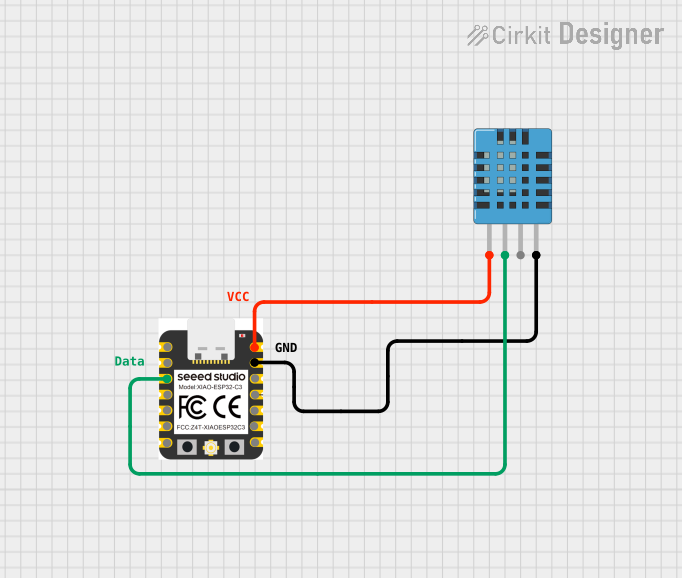
 Open Project in Cirkit Designer
Open Project in Cirkit Designer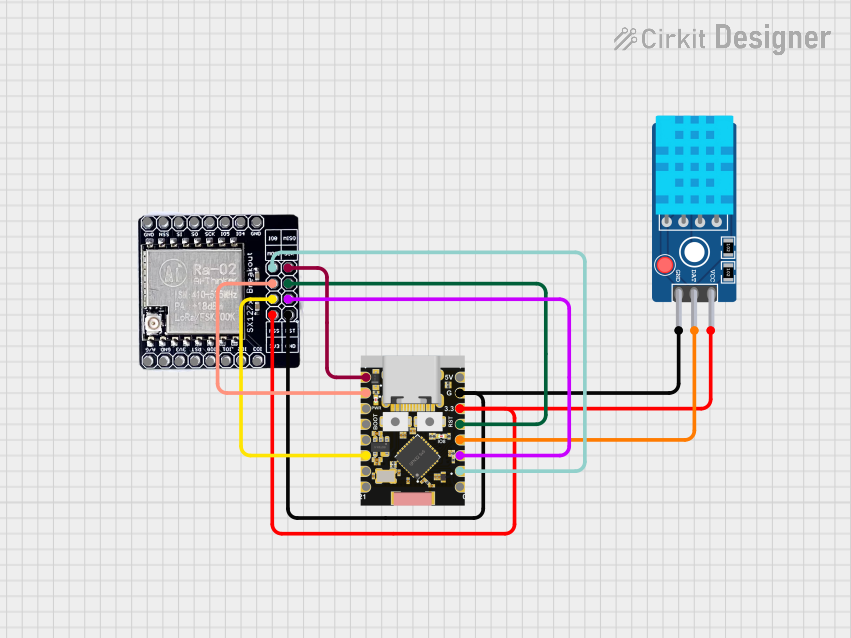
 Open Project in Cirkit Designer
Open Project in Cirkit Designer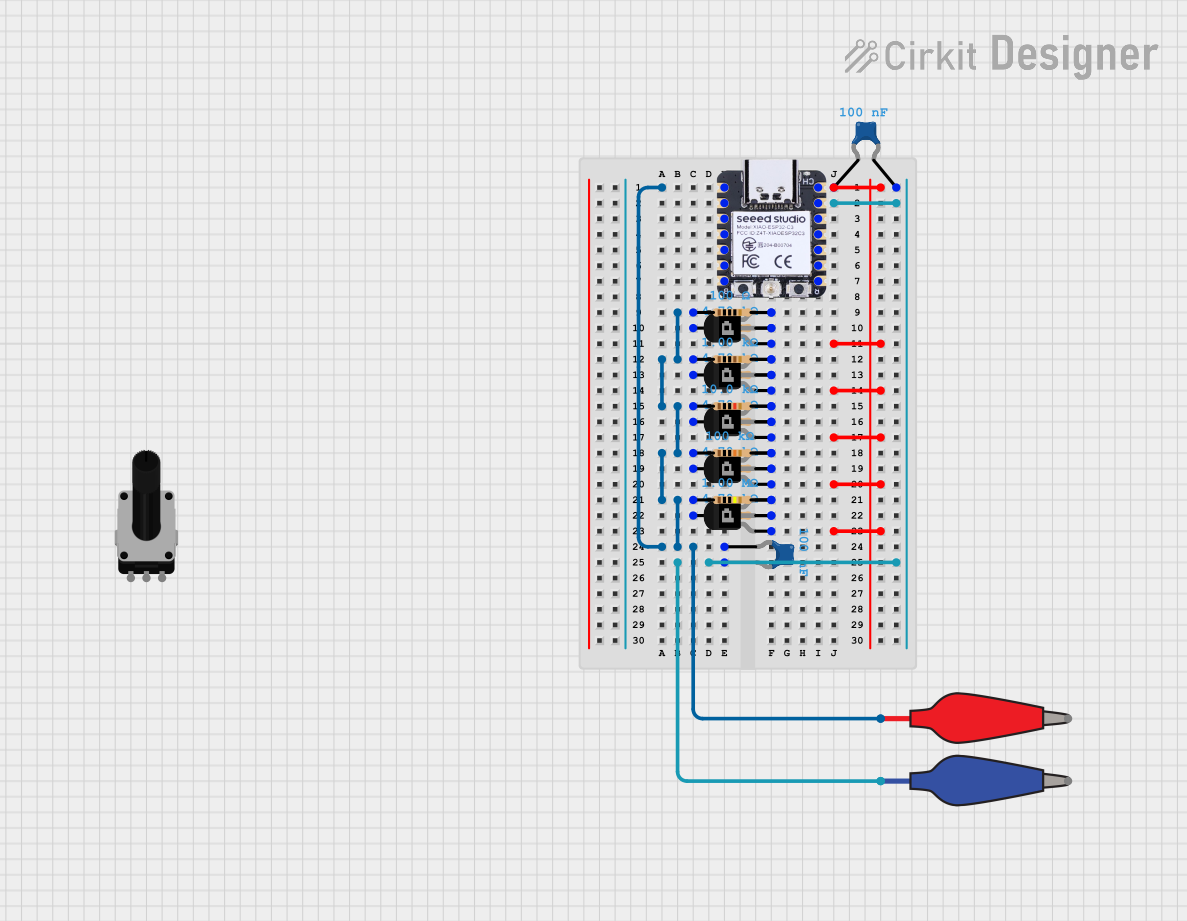
 Open Project in Cirkit Designer
Open Project in Cirkit DesignerExplore Projects Built with XIAO ESP32C3

 Open Project in Cirkit Designer
Open Project in Cirkit Designer
 Open Project in Cirkit Designer
Open Project in Cirkit Designer
 Open Project in Cirkit Designer
Open Project in Cirkit Designer
 Open Project in Cirkit Designer
Open Project in Cirkit DesignerCommon Applications and Use Cases
- IoT devices and smart home automation
- Wearable technology
- Wireless data logging and monitoring
- Remote control systems
- Prototyping for Wi-Fi and BLE-enabled projects
Technical Specifications
The following table outlines the key technical specifications of the XIAO ESP32C3:
| Specification | Details |
|---|---|
| Microcontroller | ESP32-C3 RISC-V single-core processor |
| Clock Speed | Up to 160 MHz |
| Flash Memory | 4 MB |
| SRAM | 400 KB |
| Wireless Connectivity | Wi-Fi 802.11 b/g/n (2.4 GHz), Bluetooth 5.0 BLE |
| Operating Voltage | 3.3V |
| Input Voltage Range | 5V (via USB-C) |
| GPIO Pins | 11 (including ADC, PWM, I2C, SPI, UART) |
| USB Interface | USB-C (supports programming and power supply) |
| Dimensions | 21 x 17.5 mm |
| Power Consumption | Ultra-low power consumption in deep sleep mode (as low as 44 µA) |
| Operating Temperature | -40°C to 85°C |
Pin Configuration and Descriptions
The XIAO ESP32C3 features 11 GPIO pins with multiple functionalities. The pinout is as follows:
| Pin | Name | Function(s) | Description |
|---|---|---|---|
| 1 | 3V3 | Power | 3.3V power output |
| 2 | GND | Ground | Ground connection |
| 3 | D0 | GPIO0, ADC, UART RX | General-purpose I/O, analog input, UART receive |
| 4 | D1 | GPIO1, ADC, UART TX | General-purpose I/O, analog input, UART transmit |
| 5 | D2 | GPIO2, PWM, I2C SDA | General-purpose I/O, PWM, I2C data line |
| 6 | D3 | GPIO3, PWM, I2C SCL | General-purpose I/O, PWM, I2C clock line |
| 7 | D4 | GPIO4, SPI CS | General-purpose I/O, SPI chip select |
| 8 | D5 | GPIO5, SPI CLK | General-purpose I/O, SPI clock |
| 9 | D6 | GPIO6, SPI MOSI | General-purpose I/O, SPI master out/slave in |
| 10 | D7 | GPIO7, SPI MISO | General-purpose I/O, SPI master in/slave out |
| 11 | RST | Reset | Resets the microcontroller |
Usage Instructions
How to Use the XIAO ESP32C3 in a Circuit
Powering the Board:
- Connect the XIAO ESP32C3 to your computer or power source using a USB-C cable. The board operates at 3.3V internally but accepts 5V input via USB.
Programming the Board:
- The XIAO ESP32C3 is compatible with the Arduino IDE, PlatformIO, and ESP-IDF. Install the necessary board support package (BSP) for ESP32-C3 in your chosen development environment.
Connecting Peripherals:
- Use the GPIO pins to connect sensors, actuators, or other peripherals. Ensure that the voltage levels of connected devices are compatible with the 3.3V logic of the XIAO ESP32C3.
Uploading Code:
- Write your code in the Arduino IDE or another supported environment. Select the correct board and port, then upload the code to the XIAO ESP32C3.
Important Considerations and Best Practices
- Voltage Levels: Ensure that all connected peripherals operate at 3.3V logic levels to avoid damaging the board.
- Deep Sleep Mode: Use the deep sleep mode to minimize power consumption in battery-powered applications.
- Pin Multiplexing: Many pins have multiple functions (e.g., GPIO, ADC, UART). Configure the pins appropriately in your code to avoid conflicts.
- Antenna Placement: Avoid placing metal objects near the onboard antenna to ensure optimal Wi-Fi and Bluetooth performance.
Example Code for Arduino IDE
The following example demonstrates how to blink an LED connected to GPIO2 (D2):
// Define the pin for the LED
const int ledPin = 2; // GPIO2 (D2) on the XIAO ESP32C3
void setup() {
// Initialize the LED pin as an output
pinMode(ledPin, OUTPUT);
}
void loop() {
// Turn the LED on
digitalWrite(ledPin, HIGH);
delay(1000); // Wait for 1 second
// Turn the LED off
digitalWrite(ledPin, LOW);
delay(1000); // Wait for 1 second
}
Troubleshooting and FAQs
Common Issues and Solutions
The board is not detected by the computer:
- Ensure that the USB-C cable supports data transfer (not just charging).
- Check if the correct drivers for the XIAO ESP32C3 are installed on your computer.
Code upload fails:
- Verify that the correct board and port are selected in the Arduino IDE.
- Press and hold the reset button while uploading the code to enter bootloader mode.
Wi-Fi or Bluetooth is not working:
- Ensure that the onboard antenna is not obstructed by metal objects.
- Check your code for proper initialization of Wi-Fi or Bluetooth modules.
Peripherals are not responding:
- Double-check the wiring and ensure that the peripherals are compatible with 3.3V logic.
- Verify that the correct GPIO pins are used in your code.
FAQs
Q: Can I power the XIAO ESP32C3 with a battery?
A: Yes, you can power the board using a 3.7V LiPo battery connected to the 3V3 and GND pins. Ensure proper voltage regulation.
Q: Is the XIAO ESP32C3 compatible with Arduino libraries?
A: Yes, the XIAO ESP32C3 is compatible with most Arduino libraries, especially those designed for ESP32-based boards.
Q: How do I reset the board?
A: Press the reset button (RST) on the board to restart the microcontroller.
Q: Can I use the XIAO ESP32C3 for machine learning applications?
A: Yes, the ESP32-C3 chip supports lightweight machine learning models, making it suitable for edge AI applications.